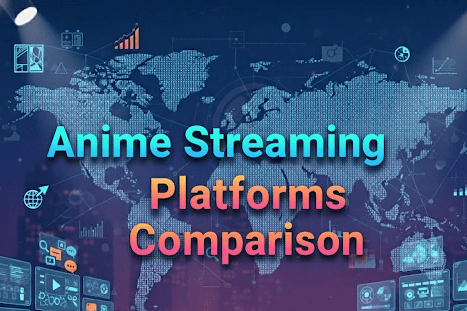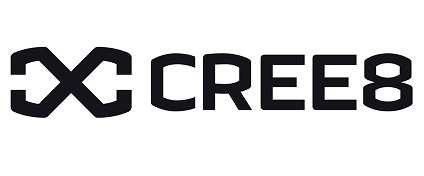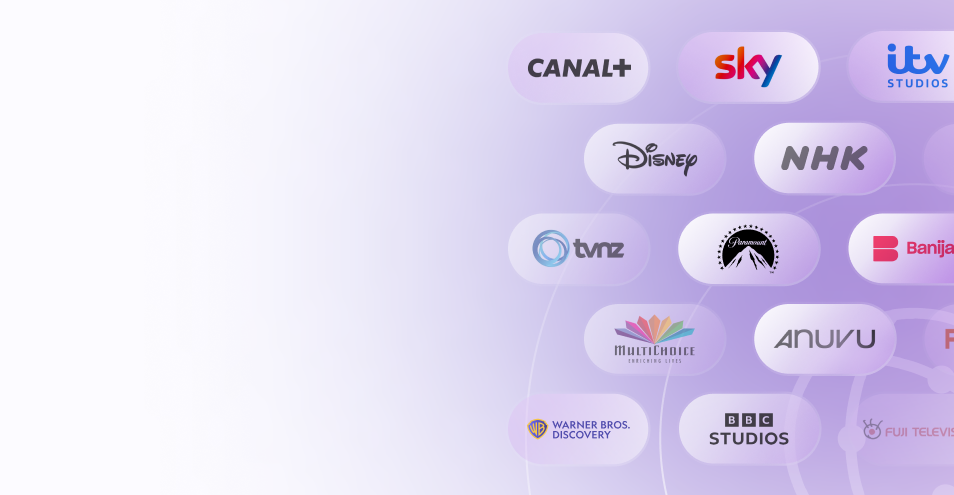Anime Streaming Platforms Comparison (2025): A Strategic Review

Introduction
The battle for eyeballs in the streaming world has a fiercely competitive and highly lucrative epicenter: anime.
For M&E executives, understanding the landscape of anime streaming is critical for making informed decisions on content acquisition, distribution partnerships, and platform strategy.
This isn’t just about where fans watch shows; it’s a multi-billion dollar ecosystem where platform choice dictates market reach, revenue potential, and a title’s cultural impact.
An anime streaming platforms comparison from a business perspective reveals distinct strategies that define the global flow of content, from massive libraries catering to superfans to curated selections designed for mainstream appeal.
Key Takeaways
| Core Challenge | Determining which anime streaming platforms offer the best strategic fit for content distribution or acquisition based on their library size, audience, and business model. |
| Strategic Solution | Conducting a detailed analysis of each platform’s content strategy, target demographic, and global reach to align with specific business objectives. |
| Vitrina’s Role | Vitrina provides real-time tracking of content acquisition trends across all major anime streaming platforms, enabling data-informed partnership and licensing decisions. |
The Market Leaders in this anime streaming platforms comparison: A Tale of Two Strategies
The global anime streaming market is largely defined by the strategic duel between two titans: the dedicated specialist, Crunchyroll, and the global entertainment behemoth, Netflix. Their approaches to content acquisition and audience engagement offer a clear contrast for any executive evaluating the landscape.
Crunchyroll: The Superfan Super-Aggregator
As the undisputed market leader in dedicated anime streaming, Crunchyroll’s strategy is built on comprehensiveness. Following its merger with Funimation, its library has become the largest and most exhaustive in the world, boasting over 1,300 titles.
According to PCMag, this makes it the essential service for hardcore anime fans. Its core value proposition is simulcasting—delivering new episodes with subtitles just hours after their initial broadcast in Japan.
This model caters directly to the most engaged segment of the audience, who demand immediate access to the latest content. For distributors, a deal with Crunchyroll means unparalleled access to the global core anime fanbase.
Netflix: The Mainstream Gateway
Netflix pursues a different model, treating anime as a key pillar within its vast, multi-genre content library. Its strategy is less about exhaustive cataloging and more about high-impact, curated acquisitions.
This includes funding exclusive “Netflix Originals” like Devilman Crybaby and securing exclusive streaming rights for highly anticipated series.
While its total anime library is smaller than Crunchyroll’s, its global subscriber base of over 200 million provides a massive mainstream audience.
For a rights holder, a Netflix deal offers the potential to turn a niche anime into a global cultural event, reaching viewers who would never subscribe to a specialized service.
The Generalist Platforms with Growing Anime Hubs
Several large-scale streaming services that do not specialize in anime have nonetheless built significant anime libraries to retain subscribers and broaden their appeal. This makes them important players in any anime streaming platforms comparison.
Hulu
Hulu maintains a respectable and rotating library of popular anime titles, often through partnerships with other distributors. As detailed by CNET, it serves as a strong “all-in-one” option for viewers who want a mix of live TV, original programming, and a solid selection of anime. It is particularly strong in the U.S. market and has been the exclusive home for major titles like Bleach: Thousand-Year Blood War, demonstrating its willingness to compete for high-value content.
Amazon Prime Video
Amazon’s approach to anime is selective, integrating a modest collection of licensed series and exclusive titles into its broader Prime Video catalog. While not a primary destination for most anime fans, its exclusive distribution of certain high-profile films and series makes it a relevant player in the licensing landscape.
How Vitrina Informs Platform Strategy in the Anime Market
For executives, choosing the right platform for distribution or identifying which service’s content strategy aligns with acquisition goals is a complex decision.
The constant flux of licensing deals, new production announcements, and shifting platform exclusives makes it nearly impossible to track the market manually. This is where strategic intelligence becomes indispensable.
Vitrina provides a comprehensive view of the global media supply chain, allowing professionals to monitor the content acquisition activities of every major streaming platform.
By tracking which companies are licensing which titles, from whom, and for which territories, Vitrina delivers the critical data needed to make informed decisions.
Whether you are a distributor looking to identify the most aggressive buyer for a new series or an acquisition executive trying to spot content gaps in a competitor’s library, Vitrina offers the real-time market intelligence to act with confidence.
Conclusion
The landscape of anime streaming is not monolithic. It is a diverse ecosystem of platforms, each with a distinct business model, content strategy, and target audience.
From the all-encompassing library of Crunchyroll to the curated blockbuster approach of Netflix and the niche appeal of HIDIVE, the right platform depends entirely on the strategic goal.
For M&E leaders, a successful anime streaming platforms comparison requires looking beyond simple content catalogs and analyzing the underlying business drivers.
In this fast-evolving market, leveraging real-time data and market intelligence is the only way to effectively navigate the opportunities and secure a winning position.
Frequently Asked Questions
Crunchyroll has the largest library of anime in the world. Following its merger with Funimation, its catalog grew to over 1,300 series and movies, making it the most comprehensive platform for anime fans globally.
The better platform depends on the user’s needs. Crunchyroll is superior for dedicated anime fans who want the largest possible library and immediate access to new episodes (simulcasts). Netflix is better for casual viewers who want a curated selection of high-profile exclusives and original productions alongside a wide variety of other entertainment.
Historically, Funimation was the market leader for English-dubbed anime. Since its content library has been merged into Crunchyroll, Crunchyroll now offers the most extensive collection of both subbed and dubbed anime series.
Yes, several platforms offer free, ad-supported anime streaming. Tubi offers a selection of popular shows like Naruto and JoJo’s Bizarre Adventure, while RetroCrush specializes in classic and older anime titles.

























